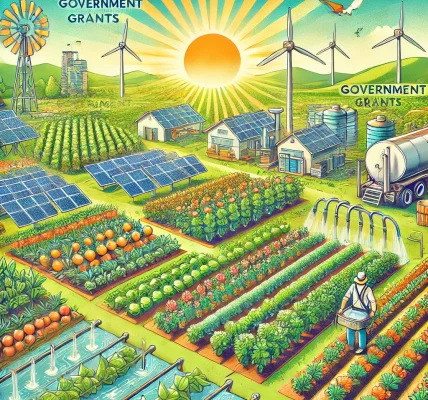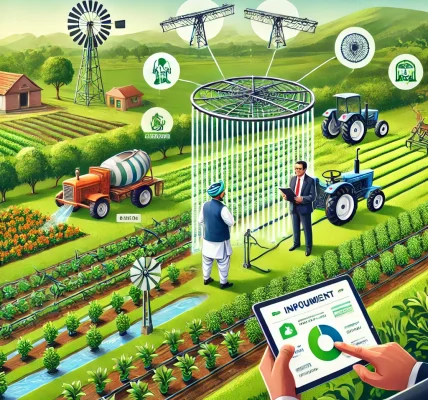Agriculture is the backbone of many economies, and governments worldwide introduce various schemes to support farmers. These schemes aim to provide financial assistance, technological support, subsidies, and market access to farmers. In this guide, we will explore the latest government agricultural schemes in 2025, their benefits, and a step-by-step application process to help farmers take full advantage of them.
Why Government Agricultural Schemes Are Important
Government agricultural schemes play a crucial role in:
- Providing financial aid and subsidies
- Supporting modern farming techniques
- Ensuring food security
- Enhancing productivity and sustainability
- Reducing the risks associated with climate change and market fluctuations
By understanding and utilizing these schemes, farmers can improve their income and contribute to a stronger agricultural economy.
Top Government Agricultural Schemes in 2025
1. Pradhan Mantri Kisan Samman Nidhi (PM-KISAN)
Objective: To provide direct income support to small and marginal farmers.
Benefits:
- Eligible farmers receive Rs. 6,000 annually in three equal installments.
- Helps in meeting essential agricultural expenses.
- Encourages financial independence among farmers.
Eligibility:
- Small and marginal farmers owning cultivable land.
- Excludes institutional landholders and higher-income individuals.
How to Apply:
- Visit the official PM-KISAN website.
- Click on the “New Farmer Registration” option.
- Enter your Aadhaar number, bank details, and land records.
- Submit the application and track the status online.
2. Pradhan Mantri Fasal Bima Yojana (PMFBY)
Objective: To provide financial protection against crop loss due to natural calamities.
Benefits:
- Affordable premium rates for farmers.
- Covers losses due to drought, floods, pests, and diseases.
- Encourages farmers to adopt risk-taking in cultivation.
Eligibility:
- All farmers growing notified crops.
- Both loanee and non-loanee farmers can apply.
How to Apply:
- Visit the official PMFBY website.
- Register using Aadhaar and landholding details.
- Choose the insurance plan and pay the premium online.
- Receive confirmation and coverage details.
3. Soil Health Card Scheme
Objective: To provide farmers with information about soil quality and fertility.
Benefits:
- Farmers receive a detailed report on soil health.
- Recommends necessary nutrients and fertilizers.
- Enhances crop yield and reduces excess fertilizer use.
Eligibility:
- All farmers are eligible.
- Government agencies collect soil samples for analysis.
How to Apply:
- Contact local agriculture offices for soil sample collection.
- Provide necessary land details.
- Receive the soil health card with recommendations.
4. Kisan Credit Card (KCC) Scheme
Objective: To provide farmers with easy access to credit.
Benefits:
- Short-term loans at low-interest rates.
- Helps in purchasing seeds, fertilizers, and equipment.
- Flexible repayment options.
Eligibility:
- Farmers engaged in crop production.
- Tenant farmers and sharecroppers can also apply.
How to Apply:
- Visit a nearby bank offering KCC.
- Fill out the KCC application form.
- Submit landholding and identity proof.
- Receive the KCC and use it for agricultural expenses.
5. National Mission for Sustainable Agriculture (NMSA)
Objective: To promote climate-resilient farming techniques.
Benefits:
- Encourages organic and conservation farming.
- Provides financial assistance for sustainable practices.
- Enhances productivity through better water management.
Eligibility:
- Farmers adopting sustainable farming practices.
- Those practicing organic and water-efficient farming.
How to Apply:
- Visit the official NMSA portal.
- Select the relevant sub-scheme (e.g., organic farming support).
- Submit an application with farm details.
- Await approval and grant allocation.
Tips for a Successful Application
To maximize your chances of approval:
- Ensure that all documents (land records, Aadhaar, bank details) are up to date.
- Check the official government portals regularly for updates.
- Apply well before deadlines to avoid last-minute issues.
- Seek guidance from local agricultural offices or Krishi Vigyan Kendras (KVKs).
Conclusion
Government agricultural schemes are designed to support farmers and improve agricultural sustainability. By understanding the benefits and application process of these schemes, farmers can enhance their livelihoods and productivity. If you are eligible for any of the schemes mentioned above, take action today and apply to secure financial aid and resources for your farming needs.




